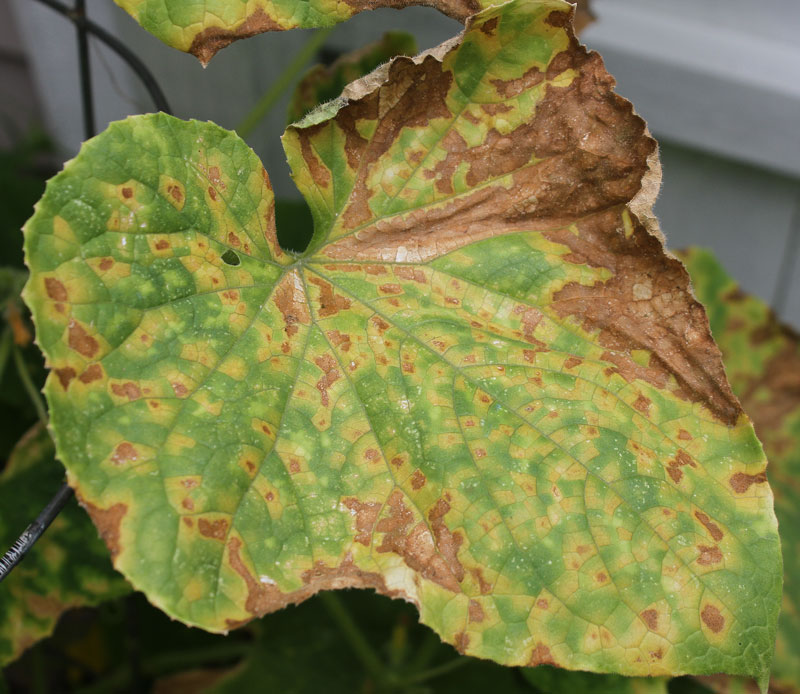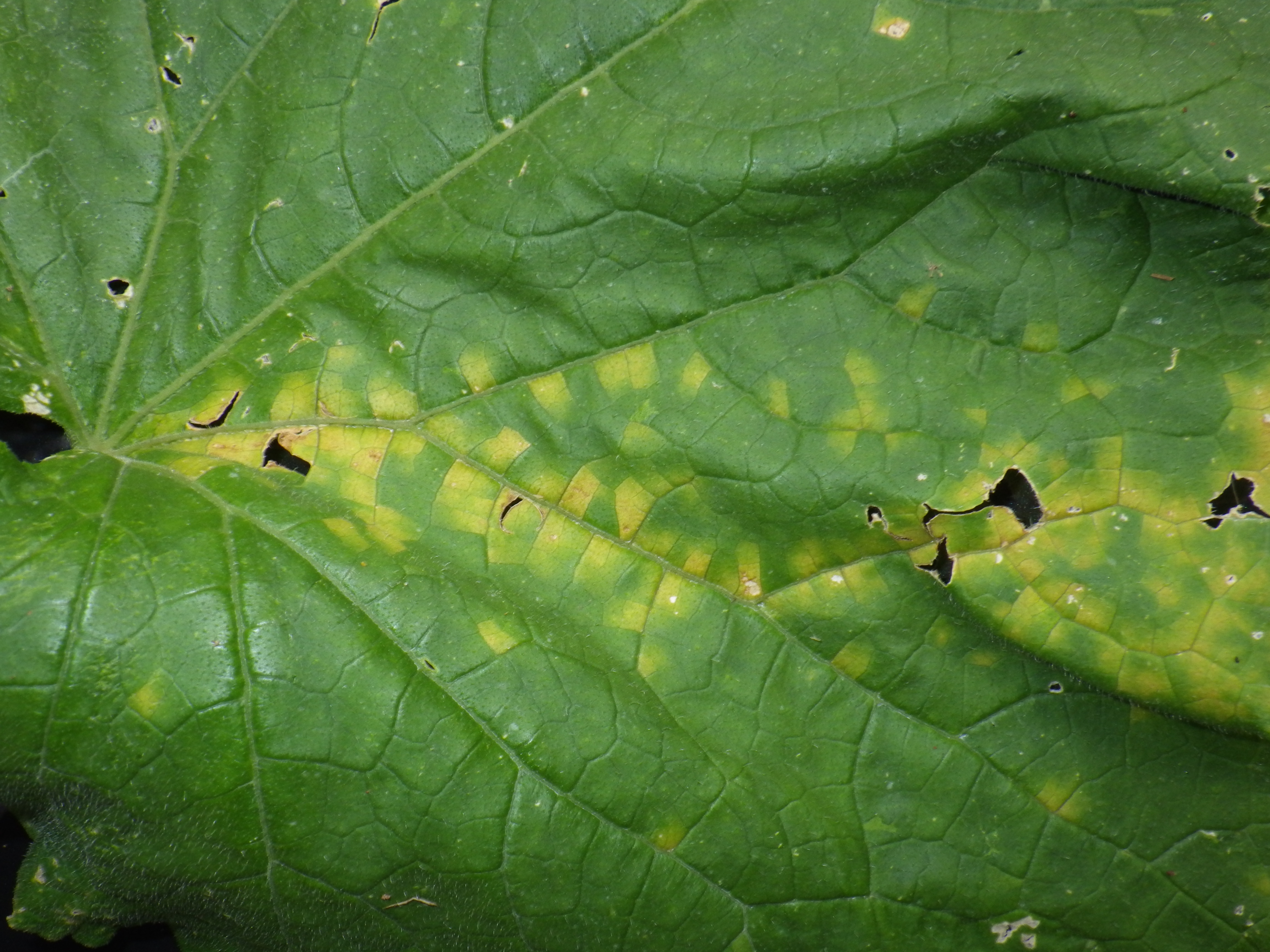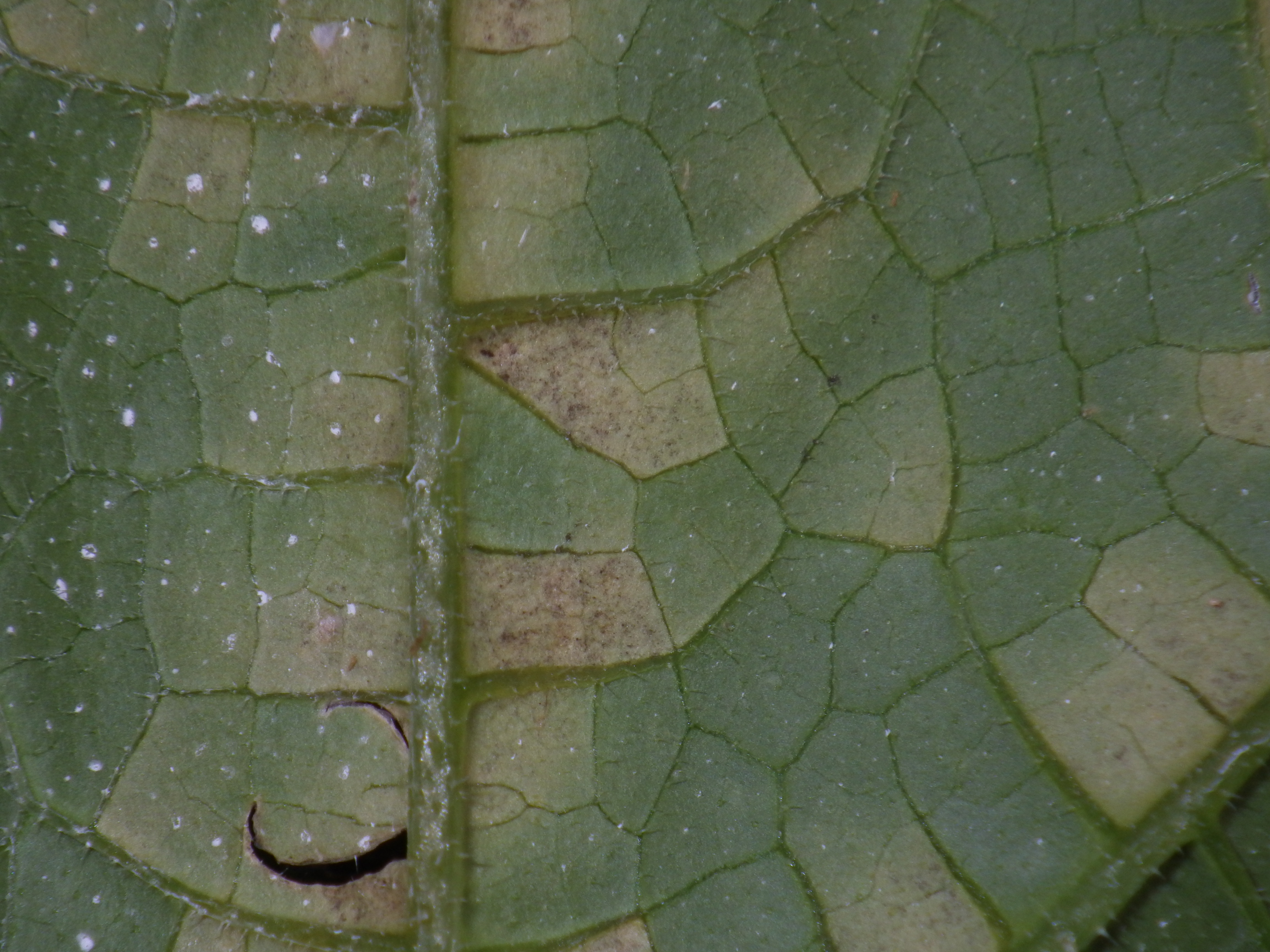Cucurbit Downy Mildew Moves Towards Western North Carolina
go.ncsu.edu/readext?233606
en Español / em Português
El inglés es el idioma de control de esta página. En la medida en que haya algún conflicto entre la traducción al inglés y la traducción, el inglés prevalece.
Al hacer clic en el enlace de traducción se activa un servicio de traducción gratuito para convertir la página al español. Al igual que con cualquier traducción por Internet, la conversión no es sensible al contexto y puede que no traduzca el texto en su significado original. NC State Extension no garantiza la exactitud del texto traducido. Por favor, tenga en cuenta que algunas aplicaciones y/o servicios pueden no funcionar como se espera cuando se traducen.
Português
Inglês é o idioma de controle desta página. Na medida que haja algum conflito entre o texto original em Inglês e a tradução, o Inglês prevalece.
Ao clicar no link de tradução, um serviço gratuito de tradução será ativado para converter a página para o Português. Como em qualquer tradução pela internet, a conversão não é sensivel ao contexto e pode não ocorrer a tradução para o significado orginal. O serviço de Extensão da Carolina do Norte (NC State Extension) não garante a exatidão do texto traduzido. Por favor, observe que algumas funções ou serviços podem não funcionar como esperado após a tradução.
English
English is the controlling language of this page. To the extent there is any conflict between the English text and the translation, English controls.
Clicking on the translation link activates a free translation service to convert the page to Spanish. As with any Internet translation, the conversion is not context-sensitive and may not translate the text to its original meaning. NC State Extension does not guarantee the accuracy of the translated text. Please note that some applications and/or services may not function as expected when translated.
Collapse ▲Cucurbit downy mildew has been reported in Haywood, Polk, Ashe, Henderson, and Chatham counties during this past week. Now that cucurbit downy mildew is present in several regions of North Carolina and surrounding states, its important that growers scout for the disease and keep up with preventive sprays to protect their crop and avoid yield loses.
If you are not familiar with cucurbit downy mildew symptoms on different cucurbits please see our previous alert to assist you in diagnosing this foliar disease. If you think you have cucurbit downy mildew in your cucurbits please contact your local Extension Agent and send photos and/or physical samples to the Plant Disease and Insect Clinic.
For more information about the disease and how to control it see our factsheets in english and spanish. Control recommendations are also available in the Cucurbit downy mildew IPM pipe website, where you can also register to recieve text, email and/or phone alerts when new disease outbreaks are reported. We have also compiled a list of previous cucurbit downy mildew alerts.

Severe cucurbit downy mildew symptoms on cucumber leaf, note angular shape of yellow lesions. Older lesions turn brown and necrotic and start to coalesce loosing their characteristic angular shape and making the diagnosis difficult (Photo Debbie Roos, NCSU Extension Agent)




